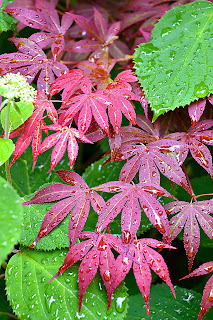Keeping a record (sketchbook)

As a free motion quilter, I found that when I face a blank quilt surface, I struggle to determine what designs to use. I have taken several classes (mostly through Craftsy) on free motion quilting and learned lots of designs. But that blank surface seems to be destructive to my memory. So I have started to keep a diary/sketchbook of designs that I like. For example, this is a sketch of my design Kaiser Roll. (demo available on my YouTube channel: Queen of Remnants.) I add my own designs only after I have tested them, as the potential designs may change as they get translated over to actual stitching, rather than sketching. This is a sketch of my design Shamrocks. (demo available on my YouTube channel: Queen of Remnants.) The original design idea included a large pebble ringing each of the shamrock units. But when I actually stitched it out, I found I preferred this version of the design. ...




